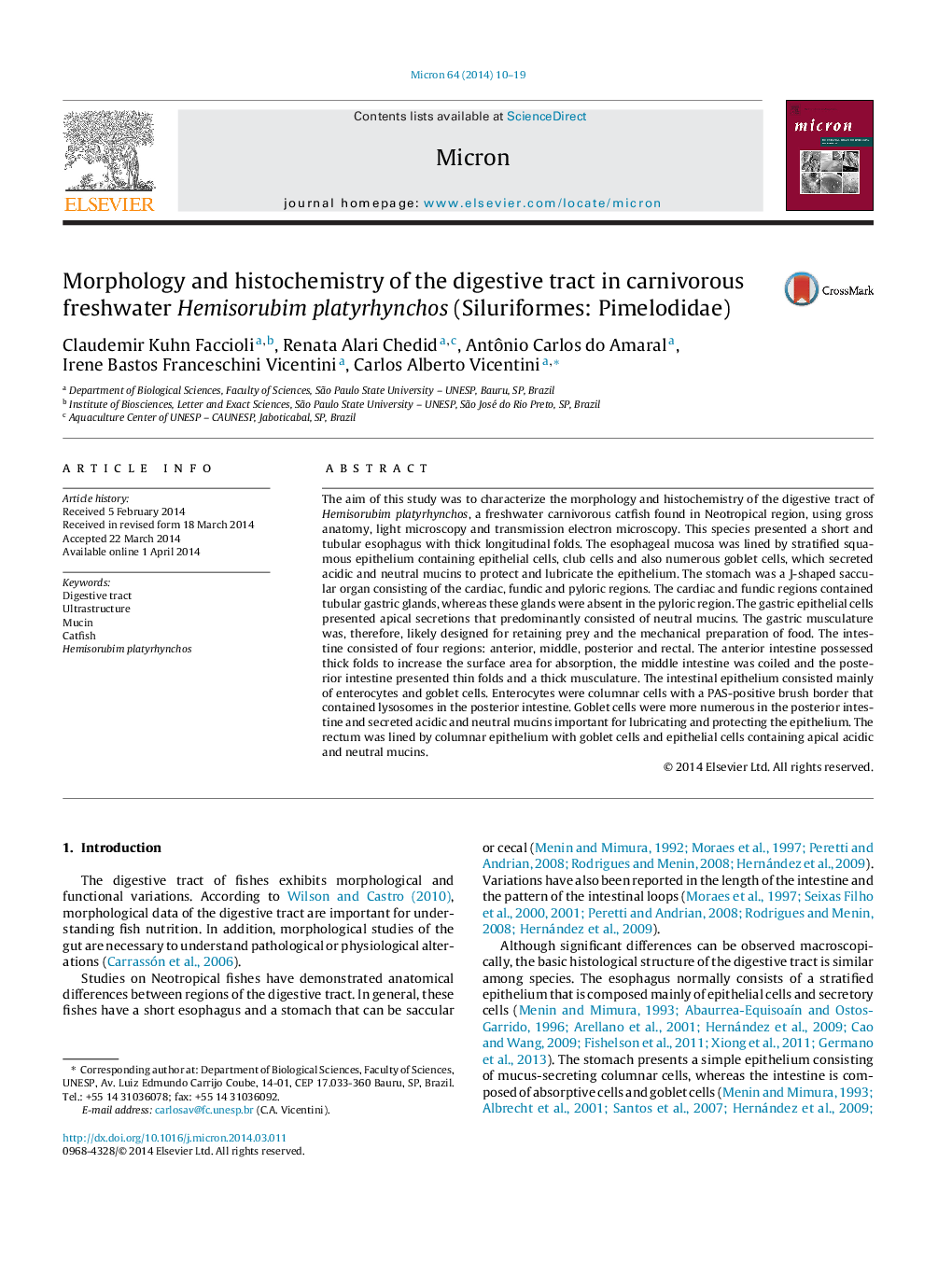| Article ID | Journal | Published Year | Pages | File Type |
|---|---|---|---|---|
| 1588886 | Micron | 2014 | 10 Pages |
Abstract
The aim of this study was to characterize the morphology and histochemistry of the digestive tract of Hemisorubim platyrhynchos, a freshwater carnivorous catfish found in Neotropical region, using gross anatomy, light microscopy and transmission electron microscopy. This species presented a short and tubular esophagus with thick longitudinal folds. The esophageal mucosa was lined by stratified squamous epithelium containing epithelial cells, club cells and also numerous goblet cells, which secreted acidic and neutral mucins to protect and lubricate the epithelium. The stomach was a J-shaped saccular organ consisting of the cardiac, fundic and pyloric regions. The cardiac and fundic regions contained tubular gastric glands, whereas these glands were absent in the pyloric region. The gastric epithelial cells presented apical secretions that predominantly consisted of neutral mucins. The gastric musculature was, therefore, likely designed for retaining prey and the mechanical preparation of food. The intestine consisted of four regions: anterior, middle, posterior and rectal. The anterior intestine possessed thick folds to increase the surface area for absorption, the middle intestine was coiled and the posterior intestine presented thin folds and a thick musculature. The intestinal epithelium consisted mainly of enterocytes and goblet cells. Enterocytes were columnar cells with a PAS-positive brush border that contained lysosomes in the posterior intestine. Goblet cells were more numerous in the posterior intestine and secreted acidic and neutral mucins important for lubricating and protecting the epithelium. The rectum was lined by columnar epithelium with goblet cells and epithelial cells containing apical acidic and neutral mucins.
Related Topics
Physical Sciences and Engineering
Materials Science
Materials Science (General)
Authors
Claudemir Kuhn Faccioli, Renata Alari Chedid, Antônio Carlos do Amaral, Irene Bastos Franceschini Vicentini, Carlos Alberto Vicentini,
